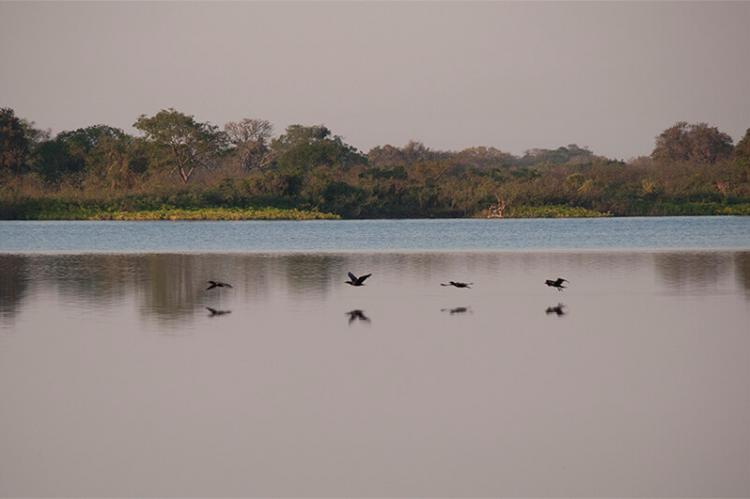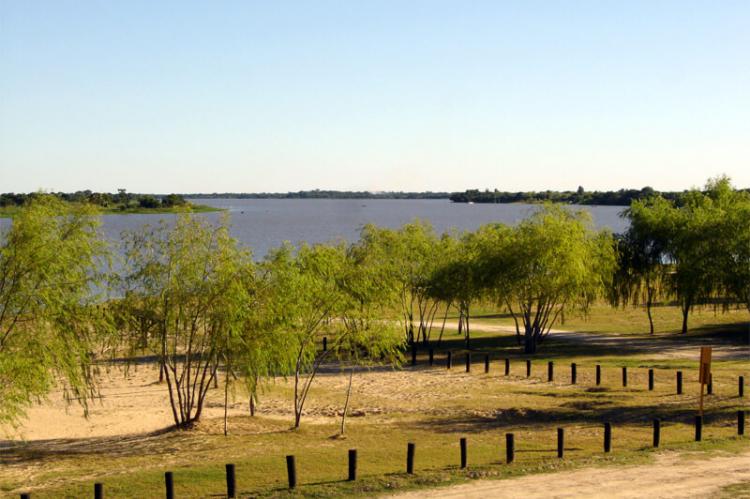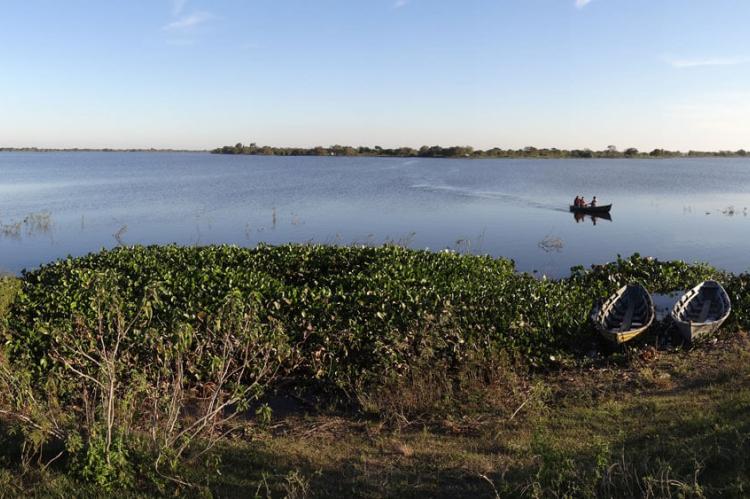Laguna Oca y Herraduras del Río Paraguay Biosphere Reserve: A Sanctuary of Biodiversity
The Laguna Oca y Herraduras del Río Paraguay Biosphere Reserve, near Formosa in northern Argentina, is an expansive biodiversity sanctuary along the Paraguay River. It is home to diverse habitats and provides a critical habitat for rare and endemic plant and animal species.
Natural Haven: Exploring the Laguna Oca y Herraduras del Río Paraguay Biosphere Reserve
The Laguna Oca y Herraduras del Río Paraguay Biosphere Reserve, a sanctuary of biodiversity and natural beauty, is nestled along a winding bend of the Paraguay River near Formosa in northern Argentina. This expansive reserve encapsulates a rich mosaic of ecosystems, offering a unique glimpse into the intricate interplay of water, land, and life within the Chaco plains.
Characterized by diverse habitats such as gallery forests, wetlands, and savannas, the reserve serves as a critical habitat for a multitude of plant and animal species, some of which are rare and endemic. The reserve's complex ecological tapestry and its role in preserving regional biodiversity underscore its importance as a natural treasure.
Geographic and Ecological Overview
Location and Landscape
The Biosphere Reserve spans an area of 63,029 hectares (155,748 acres) and is situated within the alluvial plains shaped by the dynamic Paraguay River. This region comprises a variety of water bodies, including the main river channel, semilunar lagoons such as the Oca Lagoon, internal deltas, and embankments. Additionally, it incorporates a portion of the Chaco plains, enhancing its ecological diversity.
Zoning and Protection
The reserve is meticulously divided into core, buffer, and transition zones to ensure comprehensive conservation and sustainable use. The core area covers 1,280 hectares (3,163 acres) and is dedicated to strict protection and scientific research. Surrounding this are buffer zones totaling 11,590 hectares (28,637 acres), where limited human activity harmonizes with conservation goals. The transition zones, spanning 40,564 hectares (100,235 acres), allow sustainable development and resource use while balancing human needs and environmental preservation.
Flora: A Botanical Treasure Trove
Forests and Wetlands
The reserve's vegetation is a vibrant tapestry of gallery forests, wetlands, and savannas, thriving along the meanders and oxbow lakes of the Paraguay River. The gallery forests, densely packed with high biodiversity, are rich in epiphytes, lianas, and orchids, creating a lush canopy.
Dominant Woody Species
Notable tree species include various Prosopis species, such as the white carob tree (Prosopis alba), black carob tree (Prosopis nigra), and espinillo (Prosopis affinis). The Tabebuia genus contributes with species like Palo Cruz (Tabebuia nodosa) and, less abundantly, paratodo (Tabebuia aurea). Additionally, tatané (Chloroleucon tenuiflorum) and quebrachillo (Aspidosperma triternatum) are present alongside the widely dispersed caranday palm (Copernicia alba).
Shrubs and Herbaceous Plants
Bush species like churqui (Acacia caven) and aromito (Acacia aroma) dot the landscape. The herbaceous layer is dominated by members of the Poaceae family, including espartillo (Elionurus muticus), paja boba (Paspalum intermedum), and paja brava (Panicum prionitis).
Fauna: A Rich Biodiversity
Vertebrates
The reserve is home to a remarkable diversity of vertebrates, with over 50 fish species, 40 amphibians, 50 reptiles, 300 birds, and 70 mammals. Insects, particularly ants, contribute significantly to the region's biomass.
Noteworthy Reptiles and Amphibians
Key species include the black caiman (Caiman yacare), yacaré overo (Caiman latirostris), false chameleon (Polychrus acutirostris), and various frogs like the cururú toad (Rhinella schneideri) and Chaco climbing frog (Hypsiboas raniceps). Reptilian inhabitants feature the sheep iguana (Tupinambis merianae) and large yarara (Bothrops alternatus).
Avian Diversity
The reserve's avian population is diverse and abundant. Frequently spotted birds include the common tataupá (Crypturellus tataupa), picazuró pigeon (Patagioenas picazuro), and the common yeruti (Leptotila verreauxi). The region also supports several species of hummingbirds, kingfishers, herons, and songbirds, making it a birdwatcher's paradise.
Insects and Butterflies
The environment is conducive to a variety of butterflies, such as the granadilla tiger (Dryadula phaetusa), little mirror (Agraulis vanillae), and peacock (Junonia genoveva), each adding to the vibrant ecosystem.
Conservation and Challenges
Ecological Significance
The Laguna Oca y Herraduras del Río Paraguay Biosphere Reserve is a crucial habitat for numerous endangered or threatened species. Its diverse ecosystems are vital in maintaining regional biodiversity and ecological balance.
Human Impact and Sustainable Practices
While human activities such as agriculture and urban development challenge the reserve, its zoning strategy aims to mitigate these impacts. Sustainable practices and community involvement are integral to the reserve's conservation efforts, ensuring that natural resources are used responsibly.
Conclusion
The Laguna Oca y Herraduras del Río Paraguay Biosphere Reserve is a testament to northern Argentina's rich natural heritage. With its diverse flora and fauna, intricate ecosystems, and strategic conservation measures, the reserve offers a sanctuary for wildlife and a haven for nature enthusiasts. The harmonious blend of water, land, and life within its boundaries underscores the importance of preserving such unique landscapes for future generations.



